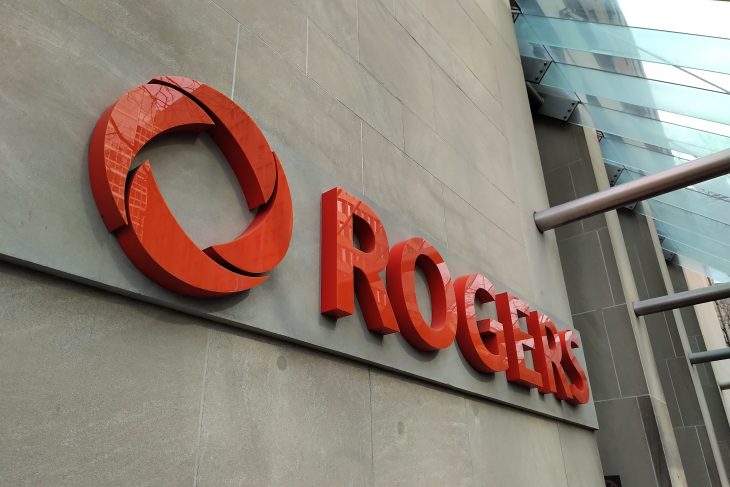
Many customers may want it, but is it contrary to the CRTC’s Code?
TORONTO – Rogers Communications today said it will now offer customers the ability to pay for new devices over 24- or 36-month time frames, at $0 down with no interest.
Wireless policy watchers will say immediately, of course, that the CRTC’s 2013 Wireless Code only effectively allows carriers to offer a maximum two-year contract to their customers. Telus wireless chief Jim Senko told Cartt.ca last week he believes the company can’t go any longer than the two-year financing offer it just launched – even though he’d like to extend a longer offer to his customers.
Rogers, however, believes 36-months is on-side with the Code because it is not offering a service contract longer than two years, and customers who choose to finance their device this way aren’t actually on a service contract at all and instead are paying month-to-month. As part of its recent re-pricing, the cost of the device and the cost of the service has been separated so customers can see want they’re paying for, can choose to pay off the device earlier, plus there is no cancellation fee if they choose to switch. All they must do is pay off the device in full before they change carriers.
With smartphones becoming ever more expensive, but also more durable and with fewer radical upgrades, $0-down 36-month contracts for a $1500 iPhone may be exactly what customers want. Rogers thinks so.
“They told us they want affordable and transparent options to get the latest wireless devices and that’s what we’ve introduced,” said Brent Johnston, Rogers’ president, wireless services, in a press release. “Offering our customers three-year device financing means lower monthly payments – it’s the right thing to do for our customers.”
According to a recent survey of Maru Voice Canada panelists done by Maru/Blue and quoted by Rogers in its release, 75% of Canadians say they want the option to pay for their device monthly rather than all at once.
That said, this is something the CRTC really should look at, and quickly, Public Interest Advocacy Centre executive director and general counsel John Lawford told Cartt.ca in an email. "Since the CRTC did not choose to require separation of device payment and service plans in the Wireless Code, it designed the two-year amortization rule with the assumption that carriers would not voluntarily offer devices and plans separately," he said.
"Now that they have, the CRTC should consider the effect of the device plan financing separate from service, on an expedited basis," he explained, noting this development may well remove the policy reasoning for the two-year rule, "which was to send consumers off to market at least once every two years.
"You can see how this development may tie consumers into a neverending chain of device financing or service plan cancellation where the two never coincide." -John Lawford, PIAC
"You can see how this development may tie consumers into a neverending chain of device financing or service plan cancellation where the two never coincide," said Lawford.
Rogers’ Edge Financing, which is the brand name, will let customers pay for the latest smartphones, as well as tablets or eSIM enabled smartwatches over 24- or 36-months. “Customers have complete flexibility to make voluntary pre-payments, or pay off their financed devices in full at any time. In the coming months, customers will also be able to take advantage of our Upfront Edge program to further lower the monthly payment of their financed phone, when they return it after a two-year period,” reads the Rogers release.
Also key for Rogers is the company won’t have to subsidize as many of these expensive devices on their own balance sheet the way they do now under older plans.
The company also introduced new Rogers Infinite Canada + U.S. today, where customers can access their unlimited data at home or in the States, with no overage charges. The Rogers Infinite plans include 10, 20 or 50 GB of high speed data, with reduced speed (256 Kbps) thereafter.
Customers can now also choose whether they want to split the max speed data with the other lines on their Rogers Infinite plan. The more lines added to a Rogers Infinite plan, the more data there is to share. Customers who prefer not to split their max speed data can choose a non-share option instead.
Despite all the change, Rogers customers can still choose a two-year device subsidy options, via its Edge Tab program, to subsidize all or part of the cost of their smartphone. Edge Tab – Edge 20, Edge 30 and Edge 40 – offers customers a discounted upfront price for their device with a variable amount of subsidy with each plan, reminds Rogers’ release. For example, with Edge 20, customers pay $20 per month as part of their plan for $480 in discount on a 24-month term. After two years, customers can choose to switch to a Rogers Infinite plan with no tab.
(As for the Maru survey, it was conducted from July 3rd to July 4th, 2019, an online survey of 1,516 randomly selected Canadian adults 18+ who are Maru Voice Canada panelists was executed by Maru/Blue. For comparison purposes, a probability sample of this size has an estimated margin of error [which measures sampling variability] of +/- 2.5%, 19 times out of 20. The results have been weighted by education, age, gender and region [and in Quebec, language] to match the population, according to census data. This is to ensure the sample is representative of the entire adult population of Canada. Discrepancies in or between totals are due to rounding.)
This story has been updated to reflect comments from PIAC



